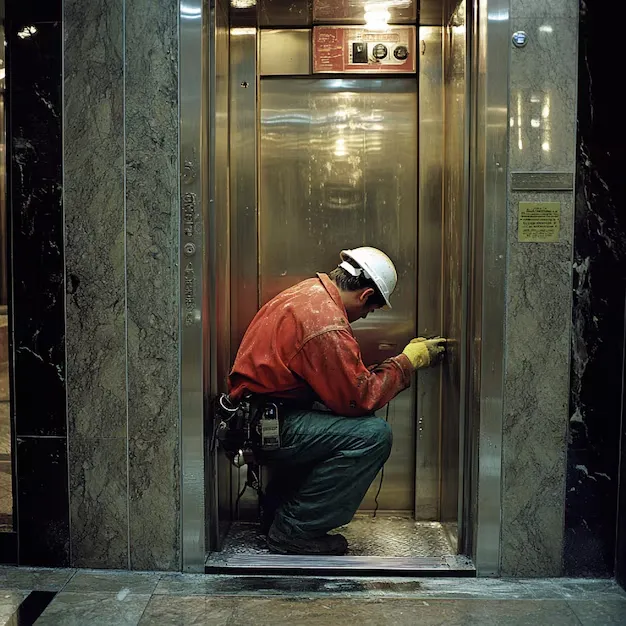If you’ve ever ridden in an elevator, you’ve trusted its parts to carry you safely between floors. But have you ever wondered what makes elevators safe, efficient, and comfortable? The answer lies in the quality and condition of lift parts. From buttons and cables to motors and safety systems, each component plays a crucial role in how elevators operate.
In this easy-to-follow guide, we’ll break down essential lift parts, explain their functions clearly, and provide practical tips for keeping elevators running smoothly. Let’s dive in!
What Are Lift Parts?
Lift parts are individual components that come together to make elevators function effectively. These parts ensure elevators operate safely, smoothly, and reliably. Understanding these components can help building owners, property managers, and even curious elevator riders appreciate the importance of regular maintenance and quality parts.
Key Elevator Parts and Their Functions
Here’s a closer look at some essential lift parts and their roles:
1. Elevator Cab
The cab is the elevator compartment where passengers ride. It should be comfortable, well-lit, and equipped with clear indicators and emergency controls.
2. Control Panel
Usually located inside and outside the elevator, control panels allow users to select floors and request assistance. They include:
- Floor selection buttons
- Emergency buttons
- Indicator lights and displays
3. Doors and Door Operators
Elevator doors are essential for passenger safety. The door operator smoothly opens and closes the doors, preventing accidents and ensuring a comfortable ride.
4. Elevator Motor
The motor powers the elevator’s movement, lifting and lowering the cab safely between floors. A reliable motor ensures smooth rides and reduces breakdowns.
5. Cables and Pulleys
These parts carry the elevator cab’s weight and enable its movement. Regular inspections are critical because worn cables and pulleys could compromise safety.
6. Safety Brakes
In the event of mechanical failure, safety brakes immediately stop the elevator cab from falling, protecting passengers. Modern elevators have multiple braking systems for extra protection.
7. Sensors and Safety Devices
Sensors detect when objects or passengers block doors, preventing accidents. They help elevators run safely and efficiently.
Importance of Using Quality Lift Parts
Investing in high-quality lift parts is crucial for:
- Safety: Reliable parts prevent accidents and breakdowns.
- Efficiency: Properly functioning parts reduce energy use and improve elevator performance.
- Longevity: Durable lift parts require fewer replacements and save money over time.
When Should You Replace Lift Parts?
Lift parts should be regularly inspected and replaced when they show signs of wear or malfunction. Common signs include:
- Strange noises or vibrations
- Slow or jerky elevator movement
- Frequent breakdowns or error messages
Regular maintenance schedules, set by professional elevator service providers, ensure parts are replaced before they cause problems.
Tips for Maintaining Lift Parts
Proper care extends the lifespan of lift parts and ensures safe operation. Follow these easy maintenance tips:
- Schedule Regular Inspections: Have elevators checked regularly by qualified technicians.
- Keep Components Clean: Dust and debris can affect sensors and door mechanisms.
- Promptly Address Issues: Small problems can quickly escalate. Don’t delay repairs or replacements.
FAQs About Lift Parts
1. How long do lift parts typically last?
Lift parts can last many years with proper maintenance, but lifespan varies based on usage and the specific component. Regular inspections are key.
2. Can I install lift parts myself?
Lift part installation should always be done by licensed elevator technicians to ensure safety and compliance with regulations.
3. Are aftermarket lift parts reliable?
Yes, aftermarket parts from reputable manufacturers can be reliable and cost-effective alternatives to original parts. Always choose quality providers and consult elevator professionals.
4. How often should elevator maintenance be performed?
Most elevators require maintenance at least twice a year. High-traffic elevators may need monthly inspections.
Conclusion
Lift parts might seem simple, but they’re essential for elevator safety, efficiency, and reliability. Investing in quality components, understanding their roles, and scheduling regular maintenance ensures your elevators perform safely for years to come. Whether you’re responsible for building management or simply curious about elevator technology, keeping these guidelines in mind will help keep elevators safe, reliable, and user-friendly.

Leave a Reply